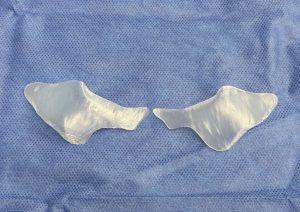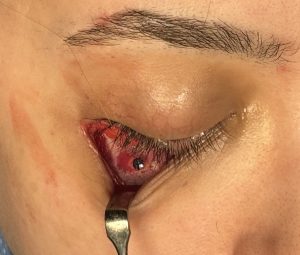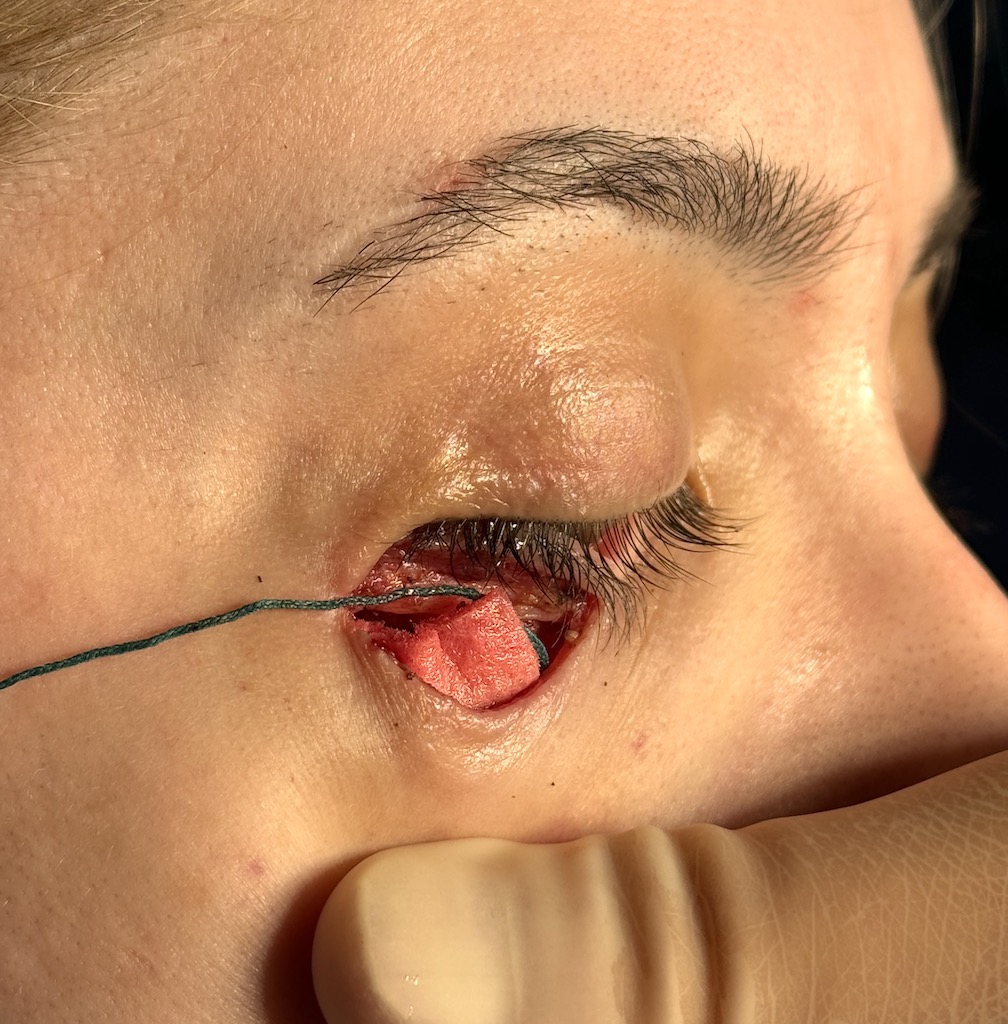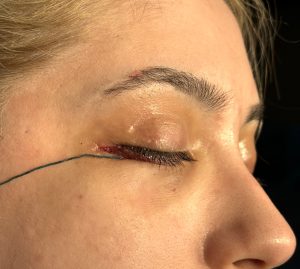Custom facial implants are like all other facial procedures in terms of inducing postoperative swelling and bruising. This is typically a relatively short-lived aesthetic issue that has largely abated by one month after surgery. Bruising or ecchymoses always resolve before all swelling has subsided. As a result there usually is not much concern about early bruising since it always goes away.
The one exception to postoperative bruising concerns is in the periorbital area, particularly the lower eyelids. The drainage from the anterior scalp, forehead, temples, and eyelids end up in the lower eyelid area and gets ‘stuck’ at the lower lid/cheek junction. At this anatomic upper midface area it can take a long time for bruising to resolve and, in some cases with certain skin pigments may result in hemosiderin staining. Such lower eyelid staining could take months to resolve and may even be permanent and require laser therapy for removal.

In the August 2024 issue of the Plastic and Reconstructive Surgery Global Open an article was published one this topic entitled ‘The Effect of Intravenous Tranexamic Acid on Postoperative Ecchymosis after Upper Blepharoplasty’. In this clinical study the authors evaluated blepharoplasty patients for their response to IV tranexamic acid (TXA) given just prior to surgical incisions as either a treated group or as a control (no TXA) in 325 patients prospectively. (138 experimental, 187 controls) Their amount of residual bruising was photographically assessed eight (8) days after the procedure. Their ecchymosis ratings averaged 5.8 for the controls and 4.1 for the experimental. They concluded the trend was for less bruising in the TCX group but it was not statistically significant.


Dr. Barry Eppley
World-Renowned Plastic Surgeon





